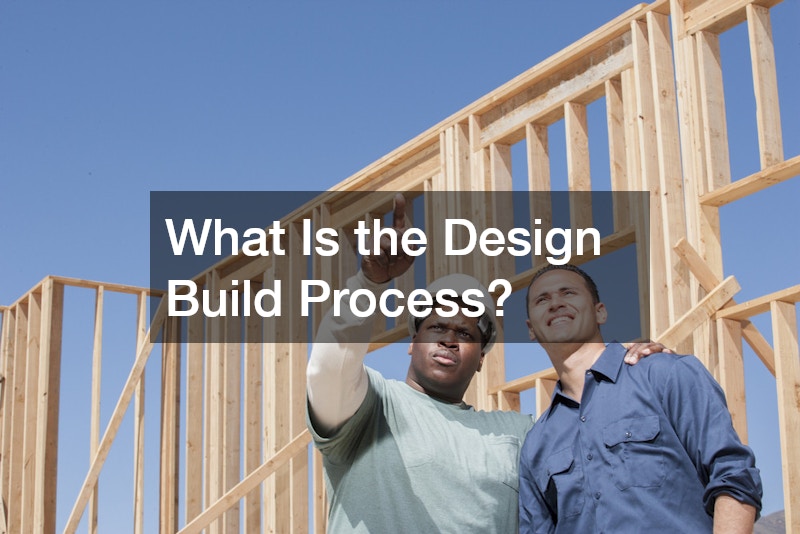The design build process is a streamlined approach to construction and remodeling projects that integrates both the design and construction phases under a single contract. Unlike the traditional design-bid-build model, where design and construction are handled by separate entities, design build offers a collaborative environment where a single team takes responsibility for the entire project. This method provides numerous advantages, including improved communication, faster project delivery, and cost efficiency.
Understanding the Design Build Model
In a design build arrangement, the client works directly with one entity, typically a design build firm, which includes architects, designers, and construction professionals. This team works together from the project’s inception through its completion, ensuring that every phase aligns with the client’s vision and goals.
The single point of responsibility fosters accountability and minimizes disputes, as all parties are invested in the project’s success.
Key Phases of the Design Build Process
The design build process can be broken down into several key phases:
1. Initial Consultation and Concept Development
The process begins with a thorough consultation where the client shares their ideas, goals, and budget. During this phase, the design build team gathers information about the site, discusses the project’s feasibility, and identifies any potential challenges. This phase often includes:
Assessing the client’s needs and preferences.
Conducting site evaluations.
Outlining a preliminary budget and timeline.
The goal is to establish a clear vision for the project and ensure all stakeholders are aligned before moving forward.
2. Design Phase
Once the initial concept is approved, the design team begins creating detailed plans and renderings. Collaboration is key during this phase, as architects, designers, and construction experts work together to create a design that is both functional and aesthetically pleasing. This phase includes:
Developing architectural plans and 3D renderings.
Selecting materials and finishes.
Incorporating client feedback into the designs.
Having the construction team involved at this stage ensures that the design is practical and within budget, avoiding costly changes later.
3. Pre-Construction Planning
Before breaking ground, the design build team refines the project details and prepares for construction. This phase involves:
Finalizing the budget and timeline.
Securing necessary permits and approvals.
Ordering materials and coordinating subcontractors.
Thorough planning at this stage helps prevent delays and keeps the project on track.
4. Construction Phase
With all plans in place, the construction phase begins. One of the primary benefits of the design build model is the seamless transition from design to construction. During this phase:
The construction team executes the plans with regular input from the design team.
The client receives regular updates and has opportunities to review progress.
Any issues that arise are addressed collaboratively, ensuring the project stays on schedule.
The integrated nature of the design build process minimizes miscommunication and allows for quick adjustments when needed.
5. Post-Construction and Final Walkthrough
Once construction is complete, the design build team conducts a final walkthrough with the client to ensure satisfaction. This phase includes:
Addressing any punch list items or minor adjustments.
Providing the client with maintenance guidelines and warranties.
Celebrating the project’s completion.
The team remains available for any follow-up questions or concerns, offering a comprehensive end-to-end experience.
Benefits of the Design Build Process
The design build approach offers several advantages over traditional construction methods:
1. Streamlined Communication
With a single team handling the project, communication is more efficient. Clients have one point of contact, reducing the likelihood of miscommunication or conflicting priorities between designers and builders.
2. Faster Project Delivery
By overlapping the design and construction phases, design build projects often move faster. The construction team can begin preliminary work while the final designs are being completed, saving time without sacrificing quality.
3. Cost Savings
Collaborating early in the process helps identify potential cost-saving measures, such as alternative materials or construction methods. The design build model also reduces the likelihood of costly change orders, as the entire team works together to stay within budget.
4. Accountability and Transparency
With one entity responsible for the entire project, accountability is clear. Design build teams are motivated to deliver high-quality results because they are fully invested in the project’s success. Clients also benefit from greater transparency regarding costs and timelines.
5. Reduced Stress for Clients
The design build process simplifies what can often be a stressful experience. Clients are guided through each phase by a dedicated team, making the process more enjoyable and less overwhelming.
When to Choose the Design Build Process
The design build model is ideal for a variety of projects, including residential remodeling, custom home construction, and commercial developments. It’s particularly beneficial when:
Clients want a collaborative, hands-on approach.
Time is a critical factor, and faster delivery is desired.
The project requires innovative solutions or unique designs.
By integrating design and construction, design build ensures that every aspect of the project aligns with the client’s vision and goals.
Watch the video above to learn more about expert design and build services!
.


